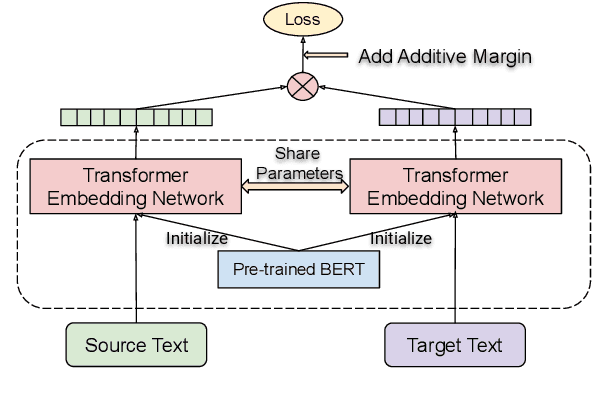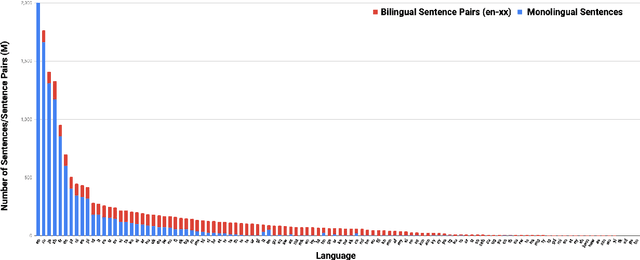Fangxiaoyu Feng
Gemini 1.5: Unlocking multimodal understanding across millions of tokens of context
Mar 08, 2024Abstract:In this report, we present the latest model of the Gemini family, Gemini 1.5 Pro, a highly compute-efficient multimodal mixture-of-experts model capable of recalling and reasoning over fine-grained information from millions of tokens of context, including multiple long documents and hours of video and audio. Gemini 1.5 Pro achieves near-perfect recall on long-context retrieval tasks across modalities, improves the state-of-the-art in long-document QA, long-video QA and long-context ASR, and matches or surpasses Gemini 1.0 Ultra's state-of-the-art performance across a broad set of benchmarks. Studying the limits of Gemini 1.5 Pro's long-context ability, we find continued improvement in next-token prediction and near-perfect retrieval (>99%) up to at least 10M tokens, a generational leap over existing models such as Claude 2.1 (200k) and GPT-4 Turbo (128k). Finally, we highlight surprising new capabilities of large language models at the frontier; when given a grammar manual for Kalamang, a language with fewer than 200 speakers worldwide, the model learns to translate English to Kalamang at a similar level to a person who learned from the same content.
Gemini: A Family of Highly Capable Multimodal Models
Dec 19, 2023Abstract:This report introduces a new family of multimodal models, Gemini, that exhibit remarkable capabilities across image, audio, video, and text understanding. The Gemini family consists of Ultra, Pro, and Nano sizes, suitable for applications ranging from complex reasoning tasks to on-device memory-constrained use-cases. Evaluation on a broad range of benchmarks shows that our most-capable Gemini Ultra model advances the state of the art in 30 of 32 of these benchmarks - notably being the first model to achieve human-expert performance on the well-studied exam benchmark MMLU, and improving the state of the art in every one of the 20 multimodal benchmarks we examined. We believe that the new capabilities of Gemini models in cross-modal reasoning and language understanding will enable a wide variety of use cases and we discuss our approach toward deploying them responsibly to users.
PaLM 2 Technical Report
May 17, 2023



Abstract:We introduce PaLM 2, a new state-of-the-art language model that has better multilingual and reasoning capabilities and is more compute-efficient than its predecessor PaLM. PaLM 2 is a Transformer-based model trained using a mixture of objectives. Through extensive evaluations on English and multilingual language, and reasoning tasks, we demonstrate that PaLM 2 has significantly improved quality on downstream tasks across different model sizes, while simultaneously exhibiting faster and more efficient inference compared to PaLM. This improved efficiency enables broader deployment while also allowing the model to respond faster, for a more natural pace of interaction. PaLM 2 demonstrates robust reasoning capabilities exemplified by large improvements over PaLM on BIG-Bench and other reasoning tasks. PaLM 2 exhibits stable performance on a suite of responsible AI evaluations, and enables inference-time control over toxicity without additional overhead or impact on other capabilities. Overall, PaLM 2 achieves state-of-the-art performance across a diverse set of tasks and capabilities. When discussing the PaLM 2 family, it is important to distinguish between pre-trained models (of various sizes), fine-tuned variants of these models, and the user-facing products that use these models. In particular, user-facing products typically include additional pre- and post-processing steps. Additionally, the underlying models may evolve over time. Therefore, one should not expect the performance of user-facing products to exactly match the results reported in this report.
The unreasonable effectiveness of few-shot learning for machine translation
Feb 02, 2023



Abstract:We demonstrate the potential of few-shot translation systems, trained with unpaired language data, for both high and low-resource language pairs. We show that with only 5 examples of high-quality translation data shown at inference, a transformer decoder-only model trained solely with self-supervised learning, is able to match specialized supervised state-of-the-art models as well as more general commercial translation systems. In particular, we outperform the best performing system on the WMT'21 English - Chinese news translation task by only using five examples of English - Chinese parallel data at inference. Moreover, our approach in building these models does not necessitate joint multilingual training or back-translation, is conceptually simple and shows the potential to extend to the multilingual setting. Furthermore, the resulting models are two orders of magnitude smaller than state-of-the-art language models. We then analyze the factors which impact the performance of few-shot translation systems, and highlight that the quality of the few-shot demonstrations heavily determines the quality of the translations generated by our models. Finally, we show that the few-shot paradigm also provides a way to control certain attributes of the translation -- we show that we are able to control for regional varieties and formality using only a five examples at inference, paving the way towards controllable machine translation systems.
Language-agnostic BERT Sentence Embedding
Jul 03, 2020



Abstract:We adapt multilingual BERT to produce language-agnostic sentence embeddings for 109 languages. %The state-of-the-art for numerous monolingual and multilingual NLP tasks is masked language model (MLM) pretraining followed by task specific fine-tuning. While English sentence embeddings have been obtained by fine-tuning a pretrained BERT model, such models have not been applied to multilingual sentence embeddings. Our model combines masked language model (MLM) and translation language model (TLM) pretraining with a translation ranking task using bi-directional dual encoders. The resulting multilingual sentence embeddings improve average bi-text retrieval accuracy over 112 languages to 83.7%, well above the 65.5% achieved by the prior state-of-the-art on Tatoeba. Our sentence embeddings also establish new state-of-the-art results on BUCC and UN bi-text retrieval.
 Add to Chrome
Add to Chrome Add to Firefox
Add to Firefox Add to Edge
Add to Edge